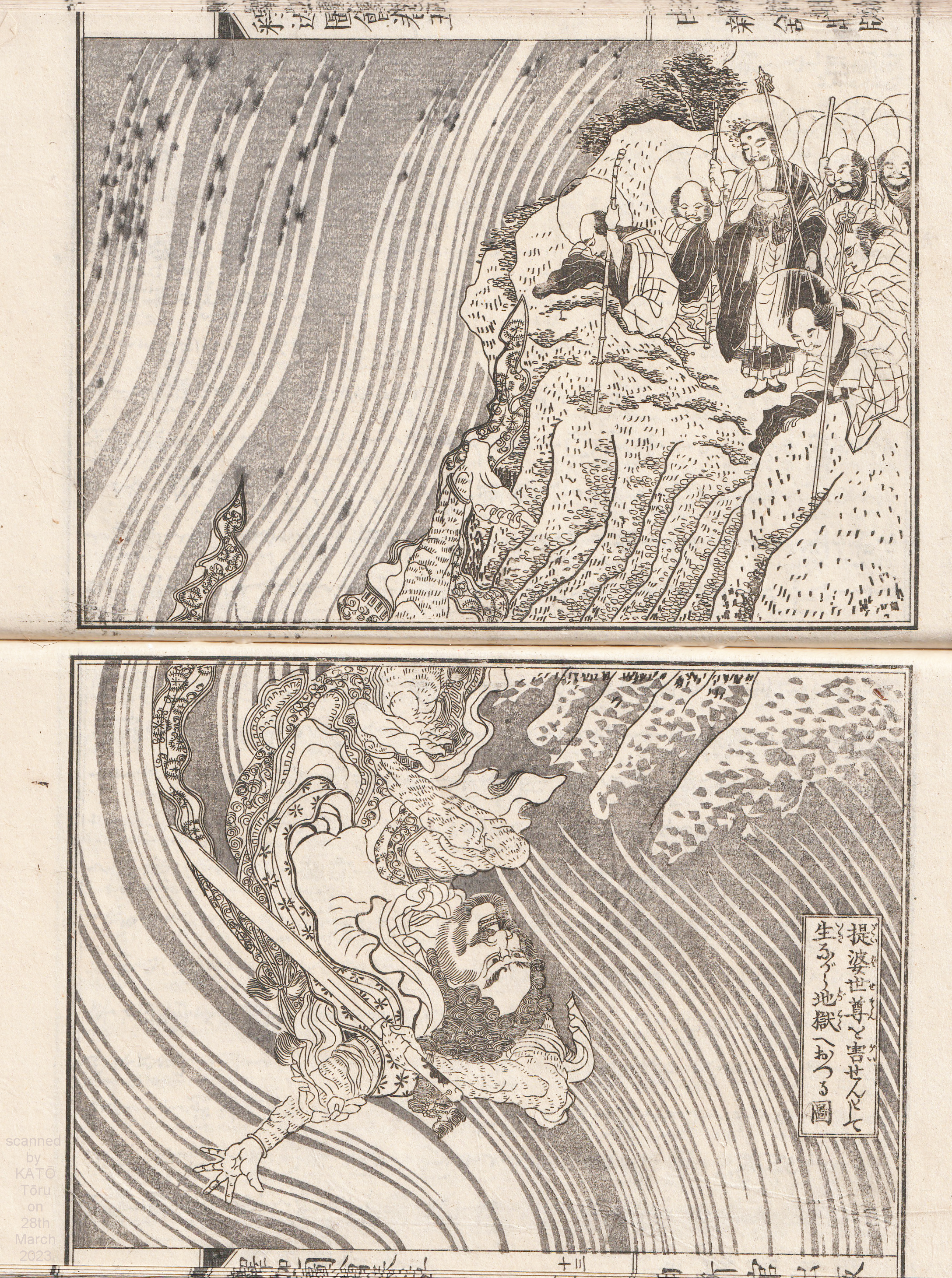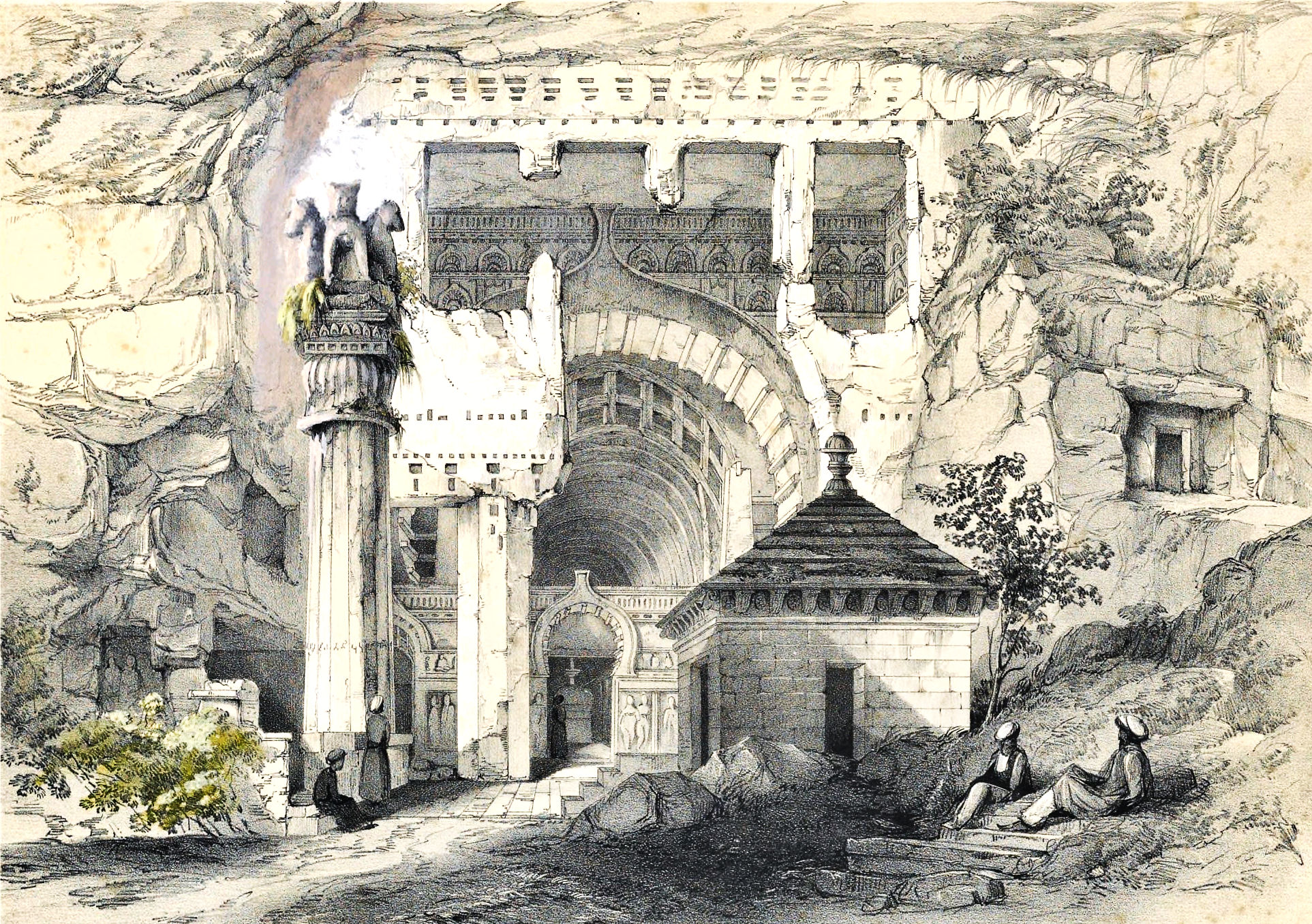|
Devadatta
Devadatta was by tradition a Buddhist monk, cousin and brother-in-law of Gautama Siddhārtha. The accounts of his life vary greatly, but he is generally seen as an evil and divisive figure in Buddhism, who led a breakaway group in the earliest days of the religion. Etymology The name ''Devadatta'' means ''god-given'' in Palī and Sanskrit. It is composed from the stem form of ''deva'' ("god") and the past participle ''datta'' of the verb ''da'' ("to give"), composed as a tatpuruṣa compound. In the '' Bhagavad Gītā'', the conch shell used by Arjuna on the battle-field of Kurukshetra was named ''Devadatta''. The name Devadatta is still used today. Scholarship Mahāsāṃghika Vinaya research According to Andrew Skilton, modern scholarship generally agrees that the Mahāsāṃghika Vinaya is the oldest extant Buddhist Vinaya.Skilton, Andrew. ''A Concise History of Buddhism.'' 2004. p. 48 According to Reginald Ray, the Mahāsāṃghika Vinaya mentions the fi ... [...More Info...] [...Related Items...] OR: [Wikipedia] [Google] [Baidu] |
Maudgalyayana
Maudgalyāyana (), also known as Mahāmaudgalyāyana or by his birth name Kolita, was one of Gautama Buddha, the Buddha's closest disciples. Described as a contemporary of disciples such as Subhuti, Śāriputra ('), and Mahākāśyapa (), he is considered the second of the Buddha's two foremost male disciples, together with Śāriputra. Traditional accounts relate that Maudgalyāyana and Śāriputra become spiritual wanderers in their youth. After having searched for spiritual truth for a while, they come into contact with the Buddhist teaching through verses that have become widely known in the Buddhist world. Eventually they meet the Buddha himself and upasampada, ordain as monks under him. Maudgalyāyana attains Enlightenment in Buddhism, enlightenment shortly after that. Maudgalyayana and Śāriputra have a deep spiritual friendship. They are depicted in Buddhist art as the two disciples that accompany the Buddha, and they have complementing roles as teachers. As a teacher, ... [...More Info...] [...Related Items...] OR: [Wikipedia] [Google] [Baidu] |
Gautama Siddhartha
Siddhartha Gautama, most commonly referred to as the Buddha (),* * * was a wandering ascetic and religious teacher who lived in South Asia during the 6th or 5th century BCE and founded Buddhism. According to Buddhist legends, he was born in Lumbini, in what is now Nepal, to royal parents of the Shakya clan, but renounced his home life to live as a wandering ascetic. After leading a life of mendicancy, asceticism, and meditation, he attained nirvana at Bodh Gayā in what is now India. The Buddha then wandered through the lower Indo-Gangetic Plain, teaching and building a monastic order. Buddhist tradition holds he died in Kushinagar and reached ''parinirvana'' ("final release from conditioned existence"). According to Buddhist tradition, the Buddha taught a Middle Way between sensual indulgence and severe asceticism, leading to freedom from ignorance, craving, rebirth, and suffering. His core teachings are summarized in the Four Noble Truths and the Noble Eightf ... [...More Info...] [...Related Items...] OR: [Wikipedia] [Google] [Baidu] |
Mahāsāṃghika
The Mahāsāṃghika (Brahmi script, Brahmi: 𑀫𑀳𑀸𑀲𑀸𑀁𑀖𑀺𑀓, "of the Great Sangha (Buddhism), Sangha", ) was a major division (nikāya) of the early Buddhist schools in India. They were one of the two original communities that emerged from the first schism of the Pre-sectarian Buddhism, original pre-sectarian Buddhist tradition (the other being the Sthavira nikāya, Sthavira nikaya). This schism is traditionally held to have occurred after the Second Buddhist council, which occurred at some point during or after the reign of Kalashoka. The Mahāsāṃghika nikāya developed into numerous sects which spread throughout History of India, ancient India. Some scholars think that the Mahāsāṃghika Vinaya (Monasticism, monastic rule) represents the oldest Buddhist monastic source, although some other scholars think that it is not the case. While the Mahāsāṃghika tradition is no longer in existence, many scholars look to the Mahāsāṃghika tradition as an ea ... [...More Info...] [...Related Items...] OR: [Wikipedia] [Google] [Baidu] |
Śāriputra
Śāriputra (; Tibetan: ཤཱ་རིའི་བུ་, Pali: ''Sāriputta'', lit. "the son of Śāri", born Upatiṣya, Pali: ''Upatissa'') was one of the top disciples of Gautama Buddha, the Buddha. He is considered the first of the Buddha's two Śrāvaka#Foremost disciples, chief male disciples, together with Maudgalyayana, Maudgalyāyana (Pali: ''Moggallāna''). Śāriputra had a key leadership role in the ministry of the Buddha and is considered in many Buddhist schools to have been important in the development of the Buddhist ''Abhidharma''. He frequently appears in Mahayana sutras, and in some sutras, is used as a counterpoint to represent the Hinayana school of Buddhism. Historians believe Śāriputra was born in the ancient Indian kingdom of Magadha (Mahajanapada), Magadha around the 6th or 5th century BCE. Buddhist texts relate that Śāriputra and Maudgalyāyana were childhood friends who became spiritual wanderers in their youth. After having searched for spiritu ... [...More Info...] [...Related Items...] OR: [Wikipedia] [Google] [Baidu] |
Bimbisara
Bimbisāra (in Buddhist tradition) or Shrenika () and Seniya () in the Jain histories ( or ) was the King of Magadha (V. K. Agnihotri (ed.), ''Indian History''. Allied Publishers, New Delhi 262010p. 166f. or ) and belonged to the Haryanka dynasty.Peter N. Stearns (2001), ''The Encyclopedia of World History''. Houghton Mifflin, p. 76 ff. . He was the son of Bhattiya. His expansion of the kingdom, especially his annexation of the kingdom of Anga to the east, is considered to have laid the foundations for the later expansion of the Mauryan Empire. According to Jain Tradition, he is said to be the first Tirthankara (''will be named as Padmanabha / Mahapadma'') out of 24th Tirthankara of the future cosmic age. He frequently visited Samavasarana of Lord Mahavira seeking answers to his queries. According to Buddhist Tradition, he is also known for his cultural achievements and was a great friend and protector of the Buddha. According to the 7th century Chinese monk Xuanzang, Bim ... [...More Info...] [...Related Items...] OR: [Wikipedia] [Google] [Baidu] |
Sangha
Sangha or saṃgha () is a term meaning "association", "assembly", "company" or "community". In a political context, it was historically used to denote a governing assembly in a republic or a kingdom, and for a long time, it has been used by religious associations, including Buddhists, Jains and Sikhs. Given this history, some Buddhists have stated that the tradition of the ''sangha'' represents humanity's oldest surviving democratic institution. In Buddhism, ''sangha'' refers to the monastic communities of ''bhikkhu'' (monks) and '' bhikkhuni'' (nuns). These communities are traditionally referred to as the ''bhikkhu-sangha'' or the ''bhikkhuni-sangha''. As a separate category, those Buddhists who have attained any of the four stages of enlightenment, whether or not they are members of the monastic community, are referred to as the ''āryasaṅgha'' ("noble Sangha"). According to the Theravada school and Nichiren Shoshu Buddhism, the term ''sangha'' does not refer to ... [...More Info...] [...Related Items...] OR: [Wikipedia] [Google] [Baidu] |
Alcohol Intoxication
Alcohol intoxication, commonly described in higher doses as drunkenness or inebriation, and known in overdose as alcohol poisoning, is the behavior and physical effects caused by recent consumption of Alcohol (drug), alcohol. The technical term ''intoxication'' in common speech may suggest that a large amount of alcohol has been consumed, leading to accompanying physical symptoms and deleterious health effects. Mild intoxication is mostly referred to by slang terms such as ''tipsy'' or ''buzzed''. In addition to the toxicity of ethanol, the main Psychoactive drug, psychoactive component of alcoholic beverages, other physiological symptoms may arise from the activity of acetaldehyde, a metabolite of alcohol. These effects may not arise until hours after ingestion and may contribute to a condition colloquially known as a hangover. Symptoms of Substance intoxication, intoxication at lower doses may include mild sedation and poor coordination. At higher doses, there may be slurred ... [...More Info...] [...Related Items...] OR: [Wikipedia] [Google] [Baidu] |
Heir Apparent
An heir apparent is a person who is first in the order of succession and cannot be displaced from inheriting by the birth of another person. A person who is first in the current order of succession but could be displaced by the birth of a more eligible heir is known as an heir presumptive. Today these terms most commonly describe heirs to hereditary titles (e.g. titles of nobility) or offices, especially when only inheritable by a single person. Most monarchies refer to the heir apparent of their thrones with the descriptive term of ''crown prince'' or ''crown princess'', but they may also be accorded with a more specific substantive title: such as Prince of Orange in the Netherlands, Duke of Brabant in Belgium, Prince of Asturias in Spain (also granted to heirs presumptive), or the Prince of Wales in England and Wales; former titles include Dauphin in the Kingdom of France, and Tsesarevich in Imperial Russia. The term is also applied metaphorically to an expected succe ... [...More Info...] [...Related Items...] OR: [Wikipedia] [Google] [Baidu] |
Mercenary
A mercenary is a private individual who joins an armed conflict for personal profit, is otherwise an outsider to the conflict, and is not a member of any other official military. Mercenaries fight for money or other forms of payment rather than for political interests. Beginning in the 20th century, mercenaries have increasingly come to be seen as less entitled to protection by rules of war than non-mercenaries. The Geneva Conventions declare that mercenaries are not recognized as legitimate combatants and do not have to be granted the same legal protections as captured service personnel of the armed forces. In practice, whether or not a person is a mercenary may be a matter of degree, as financial and political interests may overlap. International and national laws of war Protocol Additional GC 1977 (APGC77) is a 1977 amendment protocol to the Geneva Conventions. Article 47 of the protocol provides the most widely accepted international definition of a mercenary, th ... [...More Info...] [...Related Items...] OR: [Wikipedia] [Google] [Baidu] |
Buddhism
Buddhism, also known as Buddhadharma and Dharmavinaya, is an Indian religion and List of philosophies, philosophical tradition based on Pre-sectarian Buddhism, teachings attributed to the Buddha, a wandering teacher who lived in the 6th or 5th century Before the Common Era, BCE. It is the Major religious groups, world's fourth-largest religion, with about 500 million followers, known as Buddhists, who comprise four percent of the global population. It arose in the eastern Gangetic plain as a movement in the 5th century BCE, and gradually spread throughout much of Asia. Buddhism has subsequently played a major role in Asian culture and spirituality, eventually spreading to Western world, the West in the 20th century. According to tradition, the Buddha instructed his followers in a path of bhavana, development which leads to Enlightenment in Buddhism, awakening and moksha, full liberation from ''Duḥkha, dukkha'' (). He regarded this path as a Middle Way between extremes su ... [...More Info...] [...Related Items...] OR: [Wikipedia] [Google] [Baidu] |
Maitrī
(Sanskrit; Pali: ) means benevolence, loving-kindness, friendliness, amity, good will, and active interest in others. It is the first of the four sublime states () and one of the ten of the Theravāda school of Buddhism. The cultivation of benevolence () is a popular form of Buddhist meditation. It is a part of the four immeasurables in (divine abidings) meditation. as "compassion meditation" is often practiced in Asia by broadcast chanting, wherein monks chant for the laity. The compassion and universal loving-kindness concept of is discussed in the ''Metta Sutta'' of Buddhism, and is also found in the ancient and medieval texts of Hinduism and Jainism as or . Small sample studies on the potential of suggest potential benefits. However, peer reviews question the quality and sample size of these studies. Etymology and meaning is a Pali word, from which was itself derived from which, states Monier-Williams, means "friend". The term is found in this sense in the Ve ... [...More Info...] [...Related Items...] OR: [Wikipedia] [Google] [Baidu] |
SHAKA GOICHIDAIKI ZUE 1839 Devadatta Falling Into Hell
Shaka kaSenzangakhona (–24 September 1828), also known as Shaka (the) Zulu () and Sigidi kaSenzangakhona, was the king of the Zulu Kingdom from 1816 to 1828. One of the most influential monarchs of the Zulu, he ordered wide-reaching reforms that reorganized the military into a formidable force. King Shaka was born in the lunar month of ''uNtulikazi'' (July) in 1787, in Mthonjaneni, KwaZulu-Natal Province, South Africa. The son of the Zulu King Senzankakhona kaJama, he was spurned as an illegitimate son. Shaka spent part of his childhood in his mother's settlements, where he was initiated into an '' ibutho lempi'' (fighting unit/regiment), serving as a warrior under Inkosi Dingiswayo. King Shaka refined the ''ibutho'' military system with the Mthethwa Paramountcy's support over the next several years. He forged alliances with his smaller neighbours to counter Ndwandwe raids from the north. The initial Zulu maneuvers were primarily defensive, as King Shaka preferred to appl ... [...More Info...] [...Related Items...] OR: [Wikipedia] [Google] [Baidu] |










